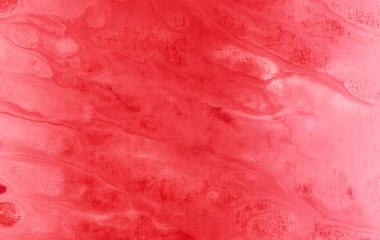
The billions of dollars spent by the fashion industry, not to mention the celebrity status of fashion gurus, testify to the importance attached to proper dress by modern society. It may come as a surprise that Judaism also stresses the importance of clothing, well beyond aspects of modesty. The Rambam (Hilchot Deot 5:9) stresses the importance of wearing clean, even fashionable, clothing and warns against wearing dirty or unkempt clothing.
This week’s parsha, Tezaveh, deals primarily with the clothing the kohanim were obligated to wear as they performed their priestly functions. Robes, tunics, hats, belts; of gold, wool, linen; in purple, white, turquoise. On and on it goes. The “uniform” that had to be worn is described by the Torah and elucidated by the rabbis in great detail. Violation of these laws brought one the punishment of “death at the hands of heaven”. Clearly, this was a serious matter.
Clothes, as the Sefer Hachinuch explains and modern research has shown, affect behaviour and our temperament. The way we dress often bespeaks our true feelings. “Then the eyes of both of them were opened and they realized they were naked; and they sewed together a fig leaf and made themselves aprons” (Breisheet 3:7). Man was created in his natural naked state. It was only after the sin of Gan Eden that the need for clothes became manifest. The tzelem Elokim, the Divine image of man, is the merging of a G-dly soul into a physical form. There was to be no conflict between the physical and the spiritual worlds; they would work together in harmony, each reflecting differing aspects of the Divine Creator. But alas, this was not to be. The fruit of the forbidden tree was eaten, this perfect harmony was broken, and the body and spirit relegated to perpetual conflict.
The physical aspect of man, left unchecked, can turn man into a two-legged animal. We must literally cover our physical bodies as we constantly struggle to develop our spiritual side. Thus, immediately after Adam and Eve clothed themselves, “they heard the sound of G-d’s voice moving around in the garden” (Breisheet 3:8).
One of the most basic signs of mourning is the tearing of one’s clothes, and those who have had to do it know how emotional making a small rip in one’s clothing can be. I have officiated at many funerals, and one of the hardest tasks I face is convincing (non-observant) people to tear keriah. Somehow, they find the tearing archaic, not a modern way to mourn.
Keriah is much more than a sign of mourning. Ripping our clothes represents the return of our souls to our Maker in a pure state. The lifelong tension between the physical and spiritual has come to an end; the soul is now under the sheltering wing of G-d. There is no longer a need for clothing to cover us up, because clothes stem from sin, and without sin, we can (figuratively) remove them. We are back in the pure state that existed in Gan Eden.
Viewed this way, tearing keriah is an affirmation of the eternity of the soul and the temporal nature of physical existence. It is a moment of great tragedy, recognizing the fleeting nature of life; but it can be a moment of great comfort also, as we link our souls to G-d. Interestingly, the Talmud explains that each of the eight garments worn by the High Priest were to serve as an atonement for sins such as arrogance, miscarriage of justice, gossip, and sexual immorality. Clothes worn properly can make one look dignified, distinguished, and even beautiful; they are “for glory and splendour” (Shemot 28:2).
We no longer live in Gan Eden. We live in a world of physicality, but a world in which we can sanctify the mundane. We have the ability, the obligation even, to elevate the physical, to beautify our “clothes”. Until the day that we no longer need them, we must make sure our clothes are clean and pure. This is the pathway to the world to come.



